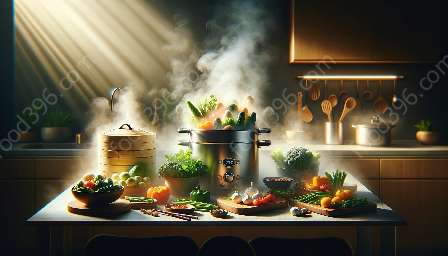Pan-frying is a versatile cooking technique that involves cooking food in a small amount of oil or fat over medium to high heat in a frying pan. It allows for the development of a crispy exterior while maintaining a tender and juicy interior, making it a popular method for preparing various types of dishes.
The Process of Pan-Frying
Pan-frying typically involves coating the food item with flour, breadcrumbs, or batter to create a crispy crust. The key to successful pan-frying is to ensure that the oil or fat is hot enough to create a sizzle upon contact with the food, which helps seal in the moisture and flavor.
When the food is placed in the hot pan, a Maillard reaction occurs, resulting in the browning of the surface and the development of rich, complex flavors. The food is then flipped to cook the other side, creating an evenly browned exterior.
Unlike deep frying, pan-frying requires a smaller amount of oil or fat, making it a healthier option while still achieving desirable texture and flavor.
Advantages of Pan-Frying
Pan-frying offers several advantages, such as the ability to quickly sear and cook the food while locking in its natural juices. This method is particularly suitable for cooking tender cuts of meat, fish fillets, vegetables, and certain types of dumplings and fritters.
Furthermore, pan-frying allows for customization by using different oils, fats, and breading or seasoning options, making it a versatile choice for a wide range of recipes. Additionally, it can create a delicious crust and impart a distinct flavor to the food, enhancing its overall appeal.
Comparing Pan-Frying to Steaming
While pan-frying and steaming are both popular cooking methods, they differ in several aspects. Pan-frying produces a crispy texture and intense flavor due to the use of oil or fat, while steaming relies on the gentle application of moist heat, preserving the natural flavors and nutrients of the food.
Steaming is often regarded as a healthier cooking method as it requires little to no oil, making it suitable for those seeking lighter, more nutritious meals. On the other hand, pan-frying is favored for its ability to create golden, crispy surfaces and enhance the overall taste and appearance of the dish.
Depending on the desired outcome and nutritional considerations, both pan-frying and steaming have their respective merits and applications in the culinary world.
Integration with Other Food Preparation Techniques
When exploring various food preparation techniques, it's important to understand how pan-frying can complement and integrate with other methods to achieve diverse culinary results. For example, pan-frying can be combined with braising, where the food is first seared in a hot pan and then cooked in a flavorful liquid to achieve tenderness and depth of flavor.
Additionally, pan-fried ingredients can be incorporated into stir-fries, salads, sandwiches, and pasta dishes to lend their distinct texture and flavor. The versatility of pan-frying makes it a valuable technique in the kitchen, providing options for creating both traditional and innovative dishes.
Conclusion
Pan-frying is a culinary art form that brings out the best in food, offering a delightful combination of textures and flavors. By mastering the technique of pan-frying, chefs and home cooks alike can create an array of mouthwatering dishes that are sure to impress and satisfy discerning palates.

